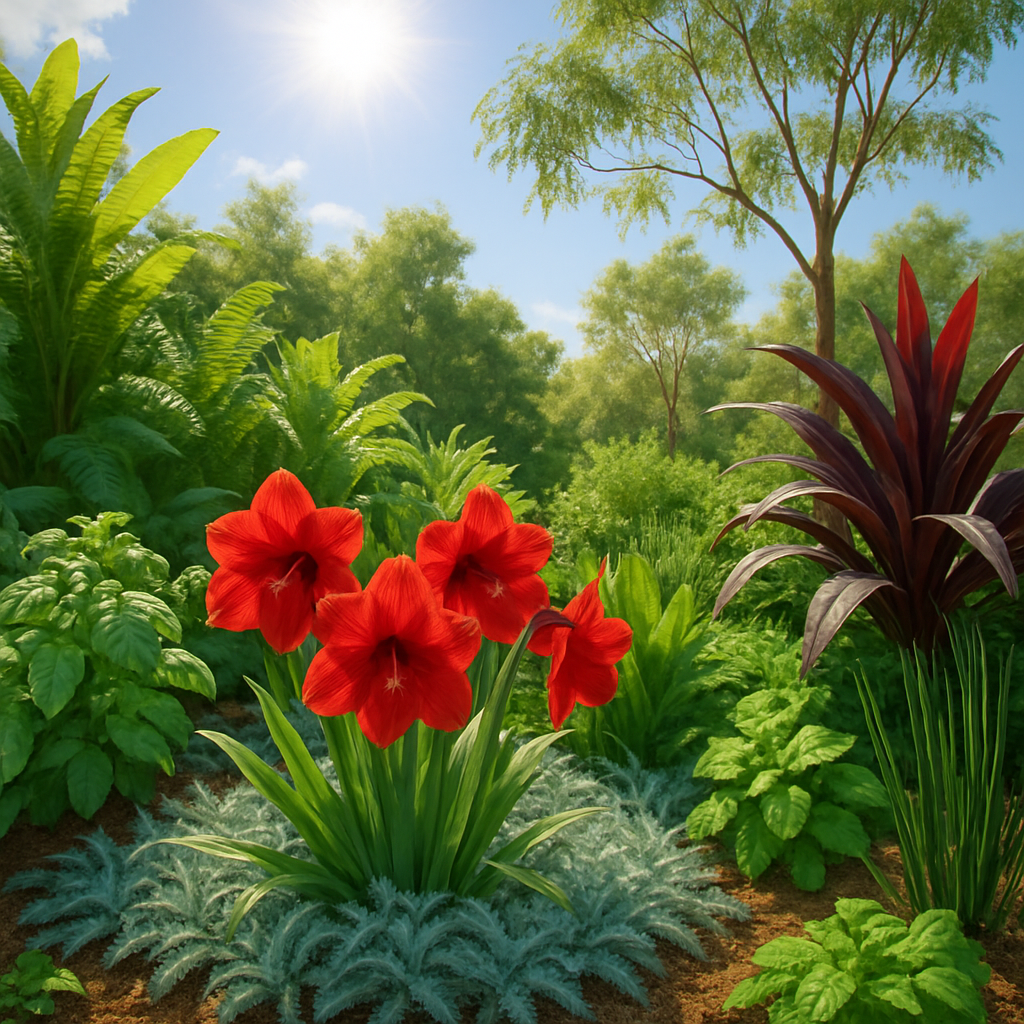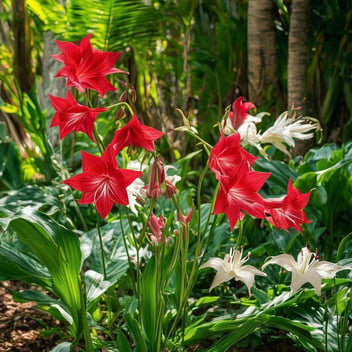Maximizing Flowering Bulbs: Companion Plants for SEQ Gardens
Introduction
South East Queensland is a realm of intense warmth, sultry humidity, and dramatic sunlight. Flowering bulbs here can dazzle—but only if their needs are met. Companion planting becomes not just helpful, but transformative. With smart partnerships between plants, bulbs can thrive more vigorously, resist pests more naturally, and produce more sustained beauty.
Companion planting is the subtle secret that can turn a good bulb display into a breathtaking tapestry. It gives bulbs friends—plants that help them flourish rather than compete.
Understanding Bulb Needs in SEQ
Climate, soil, and moisture considerations
SEQ's summers scorch. Rainfall patterns shift dramatically, with thunderous wet periods and sometimes long dry stretches. Bulbs need soil that drains well—to prevent rot—but also retains enough water during hot spells. Many thrive in soils with organic matter that buffer extremes.
Common stresses: heat, humidity, pests
Bulbs suffer from leaf scorch, fungal rot, and sometimes from pests like snails or aphids, especially when humidity lingers. The sweltering sun can also bleach blossoms or overheat shallow bulbs. Recognizing these stresses helps in choosing companions that mitigate them.
Principles of Companion Planting
What makes a good companion plant
Good companions share compatible soil and moisture needs. They don’t starve bulbs of sunlight, nor do their roots strangle them. Ideally, they offer shade, hold moisture, suppress weeds, and deter pests. Think of companions as allies: they protect, feed the soil, and enhance aesthetics.
Benefits: pest control, soil health, visual layering
Companions can repel harmful insects naturally (through scent or untouchable foliage), draw beneficial insects, improve soil structure via root systems, and add layers of texture. The visual dimension matters: a bulb surrounded by lush foliage or contrasting leaves looks far more striking than one sitting alone.
Companion Plants That Boost Bulb Growth
Low-growing groundcovers to suppress weeds and retain moisture
Plants like Liriope, Dichondra, or Dianella form carpets that keep soil cool, reduce evaporation, and hamper weeds. Beneath bulbs like rain lilies, groundcovers help the soil remain moist without being soggy—and keep little pests at bay.
Taller structure plants for shade and support
Light-shading companions such as small shrubs or slender canopies (for example, Cordyline, small native gums, or even larger perennials) protect bulbs’ foliage from the searing midday sun. Some bulbs, like Blood Lilies, appreciate mild protection during peak heat.
Herbs and ornamentals that repel pests
Herbs like basil, mint, chives, or even thyme can deter pests through their aromatic foliage. Ornamental plants like marigolds or nasturtiums often serve as decoys, drawing pest attention away from bulbs. Companion ornamentals also add bursts of colour alongside bulbs.
Ideal Companion Plant Combinations for Popular Bulbs
Amaryllis / Hippeastrum with what companions
Pair with low-lying groundcovers that maintain cool soil around the base. Perhaps Dianella caerulea or Lomandra, which adds texture without shading out the bulb’s strap-like leaves. Herbs at the edge—such as chives—can help repel pests.
Rain lily / Zephyranthes pairing ideas
Because rain lilies bloom after showers, pair them with moisture-retaining companions: ferns or native gingers. These companions benefit from the same wet-dry cycles and help maintain humidity around delicate foliage without waterlogging.
Crinum, Blood Lily, and shade-loving understory companions
Crinum and Blood Lilies benefit from companions that tolerate partial shade and share their moisture needs. Think Alpinia (gingers), Caladium, or Hedychium. Their large leaves echo bulb foliage and support lush, tropical aesthetics.
Designing Bulb Beds with Companion Plants
Layering for seasonal interest and bloom succession
Layer in heights and bloom times: taller, slower bulbs in the back; shorter, faster ones in front. Planting bulbs that bloom at different seasons near companions that remain attractive off-season ensures the bed never looks bare.
Colour, texture, and form contrast
Contrasting leaf shapes—from strappy blades to frilly or broad leaves—make bulbs pop. Mix foliage tones too: silvery, glossy green, variegated, deep maroon. Flowers and foliage form harmonies: a bold red amaryllis surrounded by silver-leafed groundcover becomes a statement.
Microclimates and positioning
Utilize garden spots that are naturally cooler (under trees, beside walls) or that receive diffused light. Position companions accordingly to buffer wind or shade. Bulbs at the edge of a bed might need different companions than those in the center.
Maintenance and Management of Bulb‑Companion Plantings
Watering & mulching strategies
Deep, infrequent watering supports deep root growth. Mulch with organic matter (wood chips, leaf mold) to conserve moisture and suppress weeds. Mulch also helps regulate soil temperature during hot spells.
Pruning, dividing and managing root competition
Over time, companions may crowd bulbs. Regular dividing of both bulbs and their companions ensures space, air flow, and nutrient availability. Trim back companions after their bloom or when their foliage dies back so bulbs get sufficient light.
Managing pests and diseases with companion support
Healthy companion plants can act as decoy hosts or trap plants. Using aromatic herbs can repel insects. Encouraging beneficial insects (ladybugs, parasitic wasps) via flower-rich companions helps keep pest populations low. Ensuring good airflow and removing decaying foliage reduces fungal risk.
Conclusion
Companion planting with flowering bulbs isn’t just decorative; it’s strategic. The right plant friends help bulbs weather SEQ’s heat and humidity, resist marauding pests, and perform with more vitality. By combining groundcovers, shade-givers, and pest-repelling herbs, one builds a garden ecosystem that supports itself. Experiment boldly. Observe closely. Your garden will reward you with richer, longer-lasting blooms and a harmony that feels nurtured and natural.




